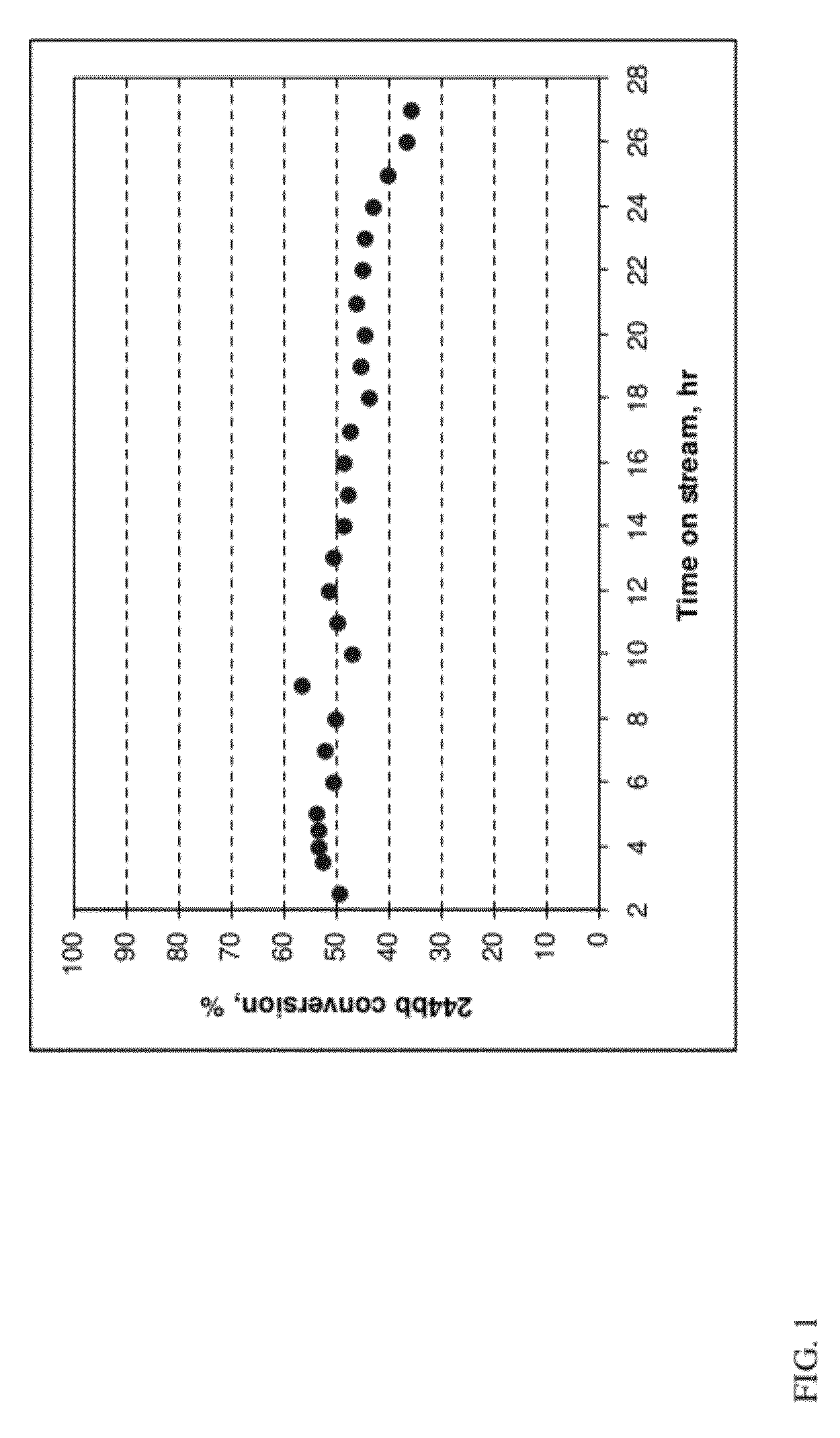Process for producing 2,3,3,3-tetrafluoropropene
a technology of tetrafluoropropene and tetrafluoropropene, which is applied in the field of new methods for preparing fluorinated organic compounds and methods for preparing fluorinated olefins, can solve the problems of reducing product yield and increasing associated costs, and achieve the effect of improving the production of high purity hfo-1234y
- Summary
- Abstract
- Description
- Claims
- Application Information
AI Technical Summary
Benefits of technology
Problems solved by technology
Method used
Image
Examples
example 1
[0055]This example illustrates the continuous liquid phase fluorination reaction of 2-chloro-3,3,3-trifluoropropene (HCFO-1233xf)+HF→2-chloro-1,1,1,2-tetrafluoropropane (HCFC-244bb). The fluorination catalyst for the experiment was SbCl5.
[0056]About 5618 grams of SbCl5 were contained in a Teflon™-lined liquid phase reactor equipped with a 2-inch ID (inside diameter) packed column and a condenser. The reactor was 2.75-inch ID×36-inch L (length). Initially, a greater than 5:1 mole ratio of HF was added to the reactor to fluorinate the catalyst. A greater than 3:1 mole ratio of Cl2 was then added to the reactor to ensure that the catalyst was brought back to a pentavalent state. The reactor was heated to about 85° C.-87° C. HF feed was started first. When an additional 1.5 lbs of HF had been added the 2-chloro-3,3,3-trifluoropropene feed was started. The purity of the 2-chloro-3,3,3-trifluoropropene feed stock was about 97.3 GC (gas chromatograph) area %. The experiment ran continuousl...
example 2
[0059]This example illustrates the difficulty in obtaining high purity 244bb using a conventional batch distillation column
[0060]The crude HCFC-244bb produced in a reaction run similar to that described in Example 1 was continuously fed into a caustic scrubber to remove unreacted HF and HCl by-product (formed during impurity formation). Then the product stream was passed through a column filled with desiccant to remove residual moisture and collected. 100 lbs of this material was charged to a distillation column consisting of a 10 gallon reboiler, 2 inch ID by 10 foot column packed with ¼″ Propak packing, and a shell and tube heat exchanger for a condenser. The column had about 30 theoretical plates. The distillation column was equipped with temperature, pressure, and differential pressure transmitters. The distillation was run at 27 psig pressure and D / P in the range of 13-15 inches of H2O. The composition of the material charged to the distillation column was 3.85 GC area % HFC-24...
example 3
[0061]The 99.25 GC area % HCFC-244bb recovered in Example 2 was used as feed to a reactor containing a dehydrochlorination catalyst. The reaction was highly selective to HFO-1234yf and a crude HFO-1234yf product that contained <1.0 GC area % impurities other than unconverted HCFC-244bb was produced. Using relatively pure HCFC-244bb as a feed to the dehydrochlorination reaction also improved dehydrochlorination catalyst stability. Catalyst stability was constant for over 1000 hours of continuous run time as compared to <500 hours using unpurified 244bb feed.
PUM
| Property | Measurement | Unit |
|---|---|---|
| temperature | aaaaa | aaaaa |
| pressure | aaaaa | aaaaa |
| temperature | aaaaa | aaaaa |
Abstract
Description
Claims
Application Information
 Login to View More
Login to View More - R&D
- Intellectual Property
- Life Sciences
- Materials
- Tech Scout
- Unparalleled Data Quality
- Higher Quality Content
- 60% Fewer Hallucinations
Browse by: Latest US Patents, China's latest patents, Technical Efficacy Thesaurus, Application Domain, Technology Topic, Popular Technical Reports.
© 2025 PatSnap. All rights reserved.Legal|Privacy policy|Modern Slavery Act Transparency Statement|Sitemap|About US| Contact US: help@patsnap.com



